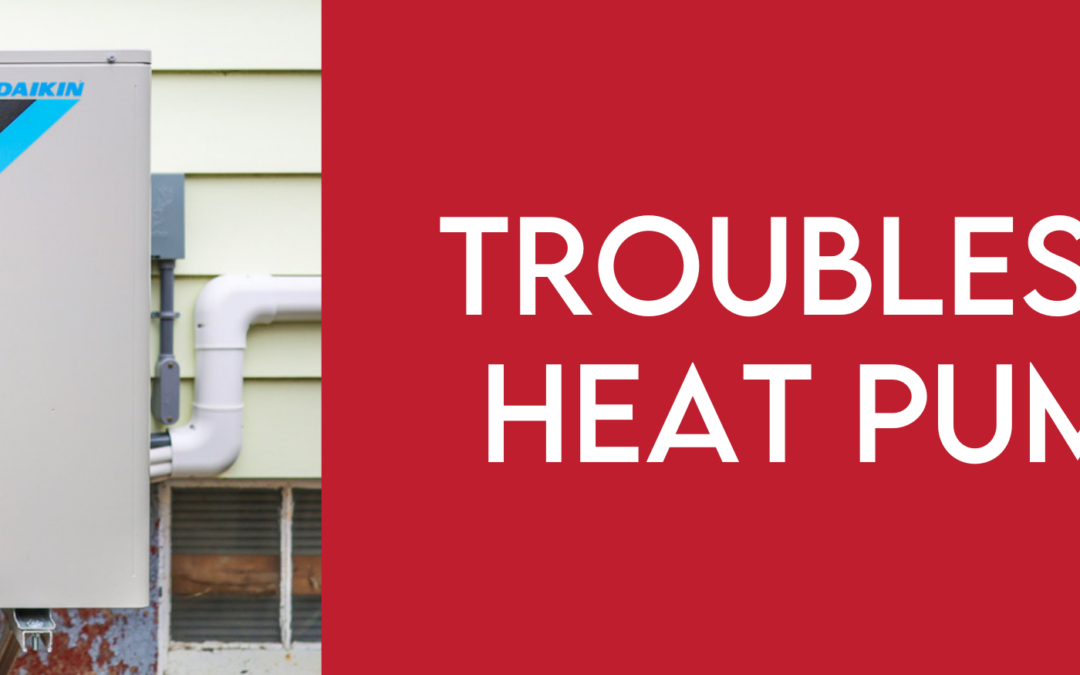When your heat pump isn’t functioning as expected, it can be frustrating, especially during extreme weather conditions. Heat pumps are complex systems that can face various issues, but many of these problems can be resolved without professional help. We’ll guide you through ten strategies to troubleshoot basic heat pump issues, ensuring your home remains comfortable year-round.
Heat pumps can potentially reduce electricity use for heating by approximately 50% compared to electric resistance heating, making them an energy-efficient choice for many homeowners. However, like any appliance, they require regular maintenance and occasional troubleshooting.
1. Check the Thermostat Settings
The thermostat is the command centre for your heat pump, and incorrect settings can lead to inefficient operation. Ensure the thermostat is set to the correct mode (heating or cooling), and the temperature is set to your desired level.
Implementation Tips
- Make sure the thermostat is powered and the display is functioning.
- Verify that it is set to the appropriate mode and temperature.
- Replace the batteries if necessary.
2. Inspect the Air Filters
Clogged or dirty air filters can restrict airflow, causing your heat pump to work harder and less efficiently. This can lead to increased energy bills and reduced comfort.
Implementation Tips
- Check your heat pump’s air filters every month.
- Replace or clean them every 1-3 months, depending on usage and manufacturer recommendations.
3. Clear the Outdoor Unit
The outdoor unit of your heat pump needs unrestricted airflow to operate efficiently. Debris like leaves, dirt, or snow can obstruct airflow, leading to poor performance.
Implementation Tips
- Regularly inspect and clear any debris around the outdoor unit.
- Maintain a clearance of at least 24 inches around the unit.
4. Verify Power Supply
A disrupted power supply can lead to a non-functional heat pump. Issues can arise from tripped breakers, blown fuses, or disconnected wires.
Implementation Tips
- Check the circuit breaker or fuse box for any tripped breakers or blown fuses.
- Ensure all electrical connections are secure.
5. Examine Refrigerant Levels
Refrigerant is essential for your heat pump to transfer heat effectively. Low refrigerant levels can cause the system to work inefficiently or not at all.
Implementation Tips
- If you suspect low refrigerant levels, contact a professional to check and refill it safely.
- Regular maintenance checks can help prevent this issue.
6. Inspect the Ductwork
Leaky or damaged ductwork can lead to heat loss and reduced efficiency. Ensuring your ducts are in good condition is crucial for optimal heat pump performance.
Implementation Tips
- Visually inspect your ducts for any visible damage or disconnections.
- Seal any leaks with duct mastic or metal-backed tape.
7. Listen for Unusual Noises
Unusual noises from your heat pump can indicate various issues, such as loose parts or mechanical failures. Identifying and addressing these noises early can prevent more significant problems.
Implementation Tips
- Pay attention to any new or unusual noises from your heat pump.
- Investigate and tighten any loose parts, if identified.
8. Reset the System
Sometimes, a simple reset can resolve many minor glitches and restore your heat pump to normal operation.
Implementation Tips
- Turn off the heat pump and wait a few minutes before turning it back on.
- Refer to your heat pump’s manual for specific reset instructions.
9. Check for Ice Buildup
Ice buildup on the outdoor unit can impede the heat pump’s ability to function correctly. This can result from poor airflow or refrigerant issues.
Implementation Tips
- Regularly check the outdoor unit for ice buildup, especially in winter.
- Clear any ice carefully to avoid damaging the unit.
10. Consult the User Manual
Your heat pump’s user manual contains valuable information specific to your model, including troubleshooting tips and maintenance guidelines.
Implementation Tips
- Refer to the manual for guidance on any issues you face.
- Keep the manual accessible for quick reference.
Troubleshooting basic heat pump issues can often be accomplished with a bit of patience and attention to detail. By following these strategies, you can address many common problems, ensuring your heat pump operates efficiently and your home remains comfortable. Remember, regular maintenance is key to preventing issues and extending the lifespan of your system. If problems persist, it’s always wise to consult a professional HVAC technician to avoid any potential damage or safety hazards. By taking these steps, you can keep your heat pump in top condition and enjoy the energy savings and comfort it provides.


Recent Comments